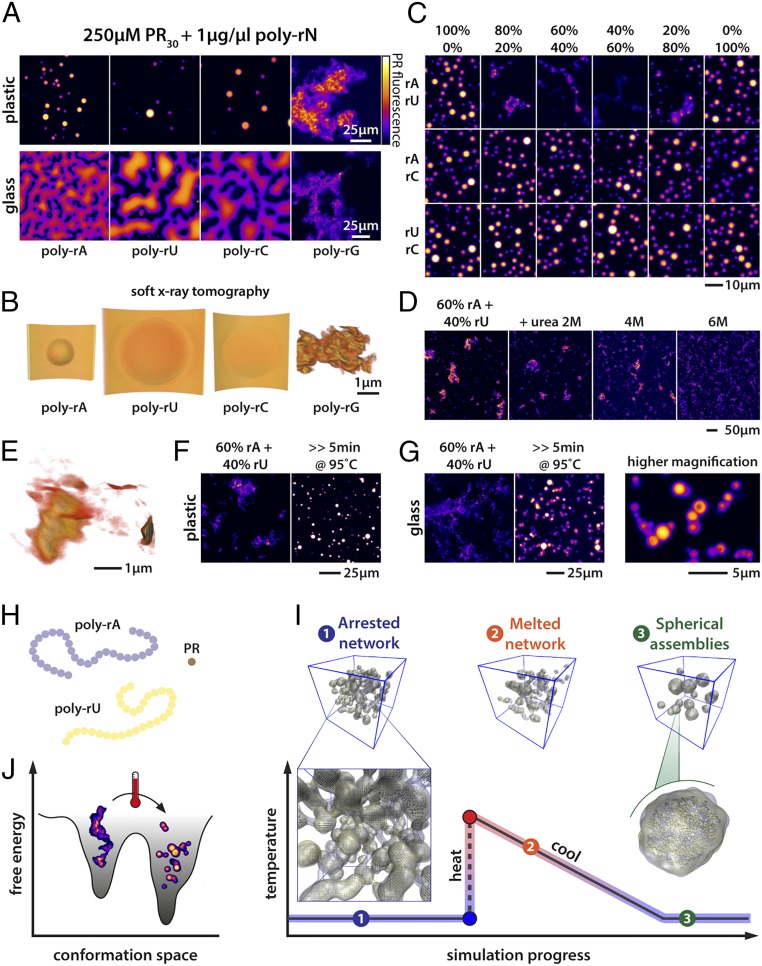Fig. 2.
RNA structure determines condensate morphology. (A) All RNA homopolymers except poly-rG induce the formation of spherical liquid droplets. The liquid droplets can fuse and wet a glass surface. In contrast, poly-rG−PR complex coacervation yields distinct morphologies that are akin to large, open, fractal-like networks. (B) SXT images of PR-homopolymeric RNA coacervates. Poly-rA, poly-rC, and poly-rU droplets wet the surface of the capillary. In contrast, poly-rG−PR systems form open 3D networks. (C) Mixing homopolymeric RNA molecules that can make complementary base pairs indicates that base pairing can induce morphological transitions in PR−RNA coacervates, and this is tuned by the stoichiometry of the interacting RNAs. In contrast, morphological transitions were not observed in the presence of homopolymeric RNA molecules that cannot make complementary base pairs. (D) Urea interferes with poly-rA:rU base pairing and disrupts the formation of large networks. (E) SXT of PR−poly-rA:rU (60:40) coacervates illustrates formation of aspherical granules linked by sheet-like low-density connections. (F) Boiling PR−poly-rA:rU coacervates melts A:U base pairing and results in spherical assemblies. (G) Boiled PR−poly-rA:rU coacervates fail to fuse and wet the glass surface. (H) In our minimal polymer model, poly-rA and poly-rU are represented as polymers of multivalent beads, while PR is a single bead, reflecting the relative differences in molecular weight and contour length. (I) Schematic showing the formation of open but arrested networks when mixtures of polymers that engage in strong intermolecular interactions (as is the case for base pairing RNAs) are simulated together. These arrested networks resolve to spherical assemblies through a heating and cooling process, as observed in simulations here and experimentally in F and G. PR is not shown, for clarity. (J) Schematic illustrating a putative energy landscape associated with complementary homopolymeric RNAs in the presence of PR. The open networks observed in C–G are metastable states corresponding to minima on the left, while lower energy spherical assemblies are shown on the right. Heating and cooling facilitates network rearrangement into spherical assemblies. Scale bars apply for all images in the panel.

